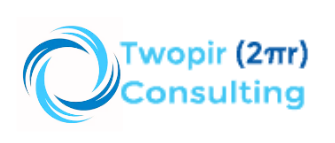Salesforce IoT Cloud
Salesforce IoT Cloud – Unleashing Connected Potential
In the pursuit of customer satisfaction and immersive experiences, the implementation of Salesforce IoT Cloud emerges as a transformative solution. Let’s delve into a more detailed exploration of Salesforce Internet of Things (IoT), unraveling its potential for businesses seeking to integrate this cutting-edge technology.
Introduction to Salesforce IoT Cloud
In the realm of interconnected devices, Salesforce IoT Cloud becomes a catalyst for elevating customer experiences. This in-depth exploration aims to provide businesses with a comprehensive understanding of Salesforce IoT and its myriad applications.
The Intelligent Experience: A Brief Overview of IoT
Consider a simple command to Alexa, such as “Alexa, let’s turn on the AC.” Ever wondered how Alexa seamlessly communicates with various household appliances to execute your commands? This fluid interaction is a manifestation of the Internet of Things (IoT), enabling devices to communicate, share data, and create intelligent user experiences.
SALESFORCE IOT Approach
Salesforce, a global leader in customer relationship management, actively explores the potential of IoT. By incorporating IoT, Salesforce introduces innovative ways for businesses to engage with their customers.
Understanding Salesforce IoT Cloud
Defining Salesforce IoT Cloud
At its core, Salesforce IoT Cloud serves as a platform designed to collect and analyze data from Internet-connected devices. This data empowers businesses to derive insights and actions, optimizing operations, enhancing customer experiences, and ultimately boosting revenue.
Powered by Thunder: A Real-Time Event Processing System
Salesforce IoT Cloud is enabled by Thunder, described as a large-scale real-time event processing system. Thunder facilitates the collection of massive data volumes, generating real-time responses. Filters within Thunder simplify the identification of relevant data from complex data streams.
Real-World Application: How Salesforce IoT Cloud Works
To grasp the functionality of Salesforce IoT Cloud, consider a practical example. Imagine owning a company that manufactures and sells industrial equipment, such as HVAC systems or heavy machinery. By embedding IoT systems into this equipment, businesses can collect data on equipment usage, energy consumption, maintenance needs, and more.
Salesforce IoT Cloud seamlessly integrates these data streams across the entire organization and all Salesforce apps. Through the platform’s intuitive point-and-click interface, businesses gain the ability to easily listen to and identify crucial patterns in the data. This information facilitates efficient maintenance scheduling, reduces energy consumption, and improves overall equipment efficiency, thereby enhancing the customer experience.
Key Features of Salesforce IoT Cloud
Data Ingestion:
Salesforce IoT Cloud can ingest data from diverse sources such as sensors, wearables, websites, and applications.
Data Processing:
Equipped with an intuitive point-and-click interface for real-time analysis and processing, making it user-friendly.
Reporting & Data Analytics:
Empowered with reporting and analytics tools that enable users to visualize data, identify patterns, and discern trends.
Einstein AI Integration:
Includes Einstein AI, collecting data from multiple sources to automatically provide insights and predict customer behavior.
Third-Party Integration:
Highly customizable, allowing seamless integration with third-party applications to meet specific business needs.
Output Connectors:
Simplifies the distribution of event data to multiple destinations and translates data into specific formats.
Benefits of Salesforce IoT Implementation
Low-Code Architecture:
A standout feature is its low-code architecture, enabling users to create orchestration rules with clicks instead of complex coding.
Connected Customer Profiles:
Facilitates direct interaction with all devices, offering real-time monitoring capabilities. For instance, in a vehicle fleet, each connected vehicle allows real-time monitoring of location, speed, maintenance needs, and automatic alerts during emergencies.
Customer Context:
Provides deep, data-driven insights into customer behavior, enabling businesses to make informed decisions and enhance the overall customer experience.
Scalability:
A highly scalable platform capable of accommodating large volumes of data, making it suitable for businesses of all sizes.
Industries Leveraging Salesforce IoT Cloud
The application of Salesforce IoT is widespread, with several industries poised to benefit:
1. Transport & Logistics:
Streamlines fleet management, enhances real-time information accuracy, and predicts maintenance needs.
2. Manufacturing:
Brings visibility, insight, and control to manufacturing processes, reducing downtime and improving efficiency.
3. Healthcare:
Enhances patient experiences through IoT-powered medical devices, providing accurate real-time data to healthcare professionals.
4. Retail:
Revolutionizes the retail industry with optimized shopping experiences, inventory tracking, and insights into consumer behavior.
Salesforce IoT Cloud Implementation Best Practices
The successful implementation of Salesforce IoT Cloud requires careful planning. Consider the following best practices:
1. Identify Business Objectives:
Understand unique business requirements and assess the readiness for IoT implementation.
2. Search for Necessary IoT Components:
Carefully analyze and choose compatible IoT components for efficient IoT cloud functionality.
3. Integrate with Other Salesforce or Third-Party Products:
Explore integration possibilities with other Salesforce products or third-party systems to maximize business process efficiency.
4. Pay Close Attention to Security Measures:
Implement robust security practices to protect against potential IoT-related security threats.
Challenges and Solutions
While implementing Salesforce IoT Cloud, businesses may encounter challenges:
1. Security Considerations:
Mitigated through the use of specialized identification tokens, ensuring data security.
2. Concerns Regarding Customer Data Privacy:
Addressed through transparent communication with customers regarding data collection and usage.
3. Flexibility Limitations:
Balancing the simplicity of low-code architecture with potential limitations on customization.
Conclusion:
Salesforce IoT Cloud is a transformative technology with the potential to revolutionize business operations across various industries. Whether optimizing manufacturing processes, streamlining transportation, enhancing healthcare, or revolutionizing retail, Salesforce IoT Cloud offers a plethora of possibilities. As businesses embark on their IoT journey, a meticulous approach to implementation and a thorough understanding of the platform’s features are crucial for unlocking its true potential.
For assistance with Salesforce IoT Cloud , please contact us directly by completing the form below.
Contact Us
We would love to hear from you
Please feel free to send us a message via the form
